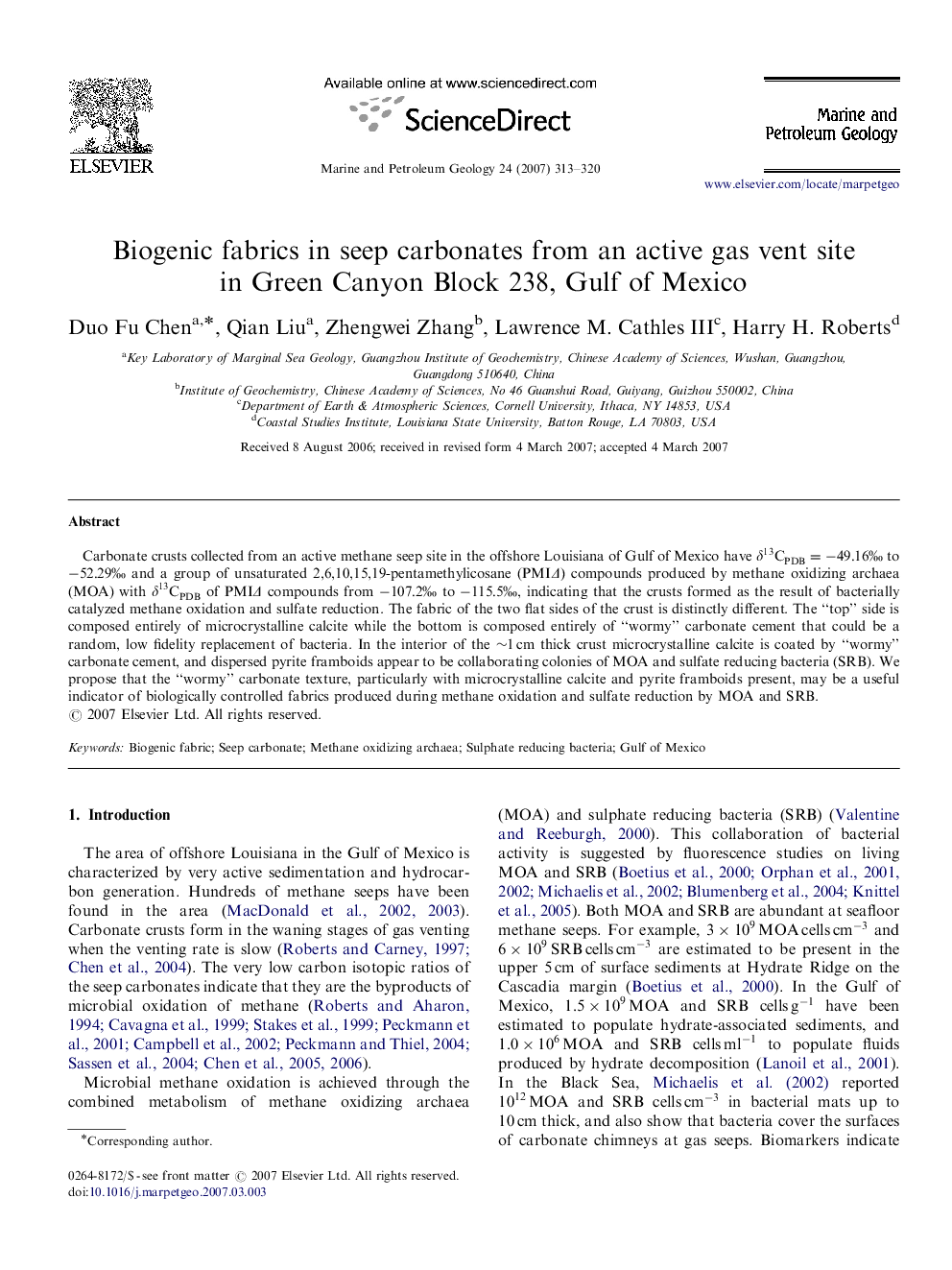| Article ID | Journal | Published Year | Pages | File Type |
|---|---|---|---|---|
| 4696693 | Marine and Petroleum Geology | 2007 | 8 Pages |
Carbonate crusts collected from an active methane seep site in the offshore Louisiana of Gulf of Mexico have δCPDB13=-49.16‰ to -52.29‰-52.29‰ and a group of unsaturated 2,6,10,15,19-pentamethylicosane (PMIΔ)Δ) compounds produced by methane oxidizing archaea (MOA) with δCPDB13 of PMIΔΔ compounds from -107.2‰-107.2‰ to -115.5‰-115.5‰, indicating that the crusts formed as the result of bacterially catalyzed methane oxidation and sulfate reduction. The fabric of the two flat sides of the crust is distinctly different. The “top” side is composed entirely of microcrystalline calcite while the bottom is composed entirely of “wormy” carbonate cement that could be a random, low fidelity replacement of bacteria. In the interior of the ∼1cm thick crust microcrystalline calcite is coated by “wormy” carbonate cement, and dispersed pyrite framboids appear to be collaborating colonies of MOA and sulfate reducing bacteria (SRB). We propose that the “wormy” carbonate texture, particularly with microcrystalline calcite and pyrite framboids present, may be a useful indicator of biologically controlled fabrics produced during methane oxidation and sulfate reduction by MOA and SRB.
